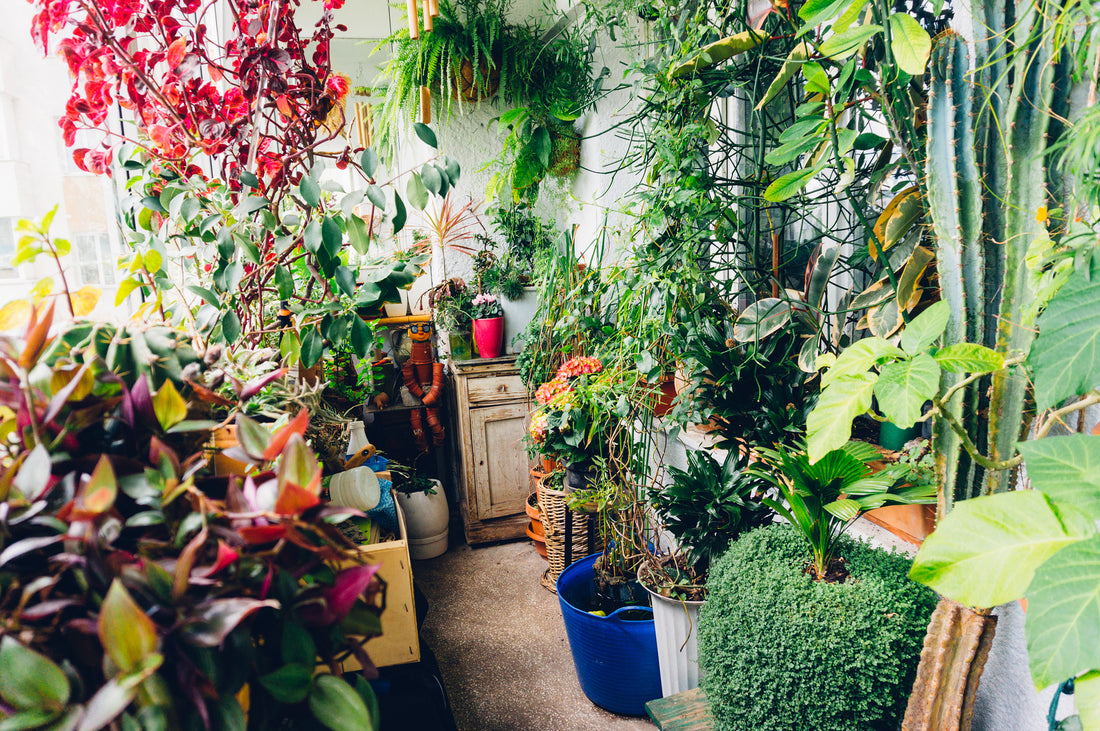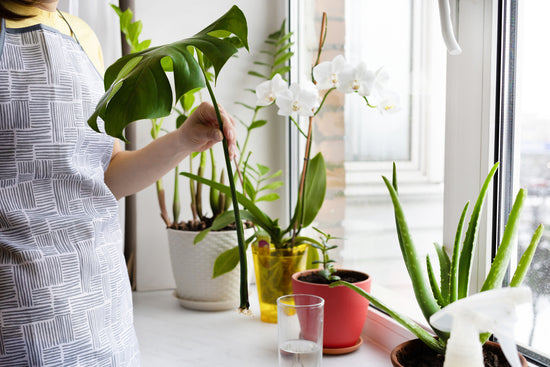In winters, the temperatures dip and so does the light levels and this slows down the hormonal activity in the plants forcing the plants into a state of dormancy. The dormancy translates into no or very rare new growth in terms of new foliage or increase in size, so through winter, your plants are essentially sleeping, storing energy to give their best when spring rolls in. As gardeners, it falls on us to give the plants the proper care to ready them for the spring growth spurt.
Plants love spring. It’s the start of the growing season and all plants come alive, whether they are at home or out in the wild and its time to kick up the care routine a notch. Plants outside respond to a change in seasons to make sure they transition to the next one for maximum benefit. Indoor plants on the other hand need a little help to make the best use of the changing season.
So here is a list of things you can do to give your plants the leg up.

Water your plants right
While watering houseplants in winter is on need only basis and it reduces in frequency, as the temperature starts warming you will find that your plants need to be watered more frequently. This is essential to compensate for the evaporation of water due to climbing temperatures and an increase in the rate of photosynthesis due to brighter sunlight.To avoid overwatering, increase the watering frequency gradually. Keep track of how quickly the topsoil is drying out after every watering to get an idea of how many times you need to water your plants in a week.

Clean and dust your plants
Cleaning and dusting the leaves of your plants is not only good for your mental health and the plant’s looks, it's also essential to help them breathe better and boost their rate of photosynthesis. The dust that settles on the leaves stops the leaf’s surface from absorbing light, this hampers the rate of photosynthesis. The leaf surface is full of tiny openings called stomata through which leaves take part in the exchange of gases, dust blocks these pores and lowers the rate at which plants breathe.While the dusting of leaves is something that needs to be done regularly, it is more important when spring sets in. If you have smaller plants, take them to the bathroom and give them a nice long shower and let them stay in there for a couple of hours to soak up all the humidity.
For larger plants, you can mist down the leaves with plain water and then wipe them with a soft cloth.
Take care to avoid this step for cacti and succulents, brushing them with a dry paintbrush helps. Or if you can time your succulent watering to leaf cleaning you can wash them but take care not to damage the root ball and don’t let them sit in the bathroom, dry them quickly.
I personally discourage you from using leaf shiners available in the market they do nothing for plant health.

Re-pot or pot up your plants
Start of spring is a great time to change the soil of your plants or repot them into bigger pots if they are rootbound. Spring means new root and shoot growth, so your plants will appreciate the extra space. Furthermore, since the growth hormones are in hyperdrive and the plant is essentially happy, the chance of it going into shock are very little, if proper steps are followed during repotting.Adding slow release fertilisers and compost to your potting mix at this time is also a great idea since the plants are ready to absorb nutrients after a dry spell in the winters. Keep fertilising your plants with a generic houseplant fertiliser every three weeks from spring to the onset of next winter, essentially Diwali time, to help your plants get the maximum growth.
Its also the perfect time to start your seed garden and propagate new plants.

Prune and trim your plants the right way
Most of our houseplants come from tropical areas and are not fans of winter and if you live in an area that experiences winters below 15 degree Celsius on average, it messes with their natural growing rhythms.Plants react to this stress by dropping leaves, yellowing, becoming leggy, browning, and wilting etc. Spring is a good time to prune away those leggy stems, leafless branches, and make space for new bushier growth.
Cutaway any yellowing leaves, or leggy vines with tiny leaves, and also make judicious cuts to promote new branches to grow for a fuller plant. Especially in the case of flowering plants, selective pruning means more branches and more flowers on those branches.

Reposition your plants for maximum benefits
Whatever part of the country you live in, it is obvious that you have moved your plants during winters. People in cold areas have moved their plants indoors to save them from biting cold and people in slightly warmer areas have shifted them outdoors to the balconies or near windows to make sure the plants get as much light as possible in the tepid winter sun.With spring, the light intensity is increasing again, and its time to reposition your plants. The sun-loving plants go back into the sun, while the indoor plants come back out of the harsh sun to avoid leaf burns.
Move your tropical and vining plants to areas with indirect or partial light, move your succulents and sun-loving plants to the sun.
If spring in your area is mild with pleasant temperatures and mild sunlight, you might want to consider moving your indoor plants into at least the morning sun to boost active growth.

Spring is a season of changes in the garden – new leaves, new flowers, and everything is refreshed. Spring is the gardener’s best friend and it is time for you to welcome it into your homes with all the prep.
Don’t forget to stock up on potting supplies and seeds for the season.
Happy gardening!
Click to Buy Flowering Plants
Buy Garden Accessories Online
Buy Flower Seeds










